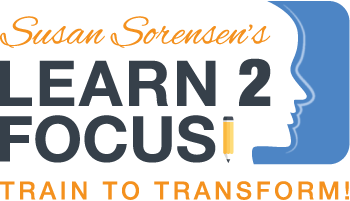Anxiety & Behavioral Challenges: How Rhythm and Percussion May Resolve These Issues
/There is something intensely comforting about a steady beat.
Once the mind and body catch the rhythm, it’s as though something mentally slides into place. Playing the beat on a drum of your own seems to organize your internal rhythms: Your head and neck bob, your feet keep time, and your breathing is in synch.
You feel aware, connected, and satisfyingly in the moment.
The science community agrees. There have been numerous studies that corroborate the benefits of drumming for mental and emotional health.
Research shows that through movement and music, rhythm and sound frequency help sharpen focus, improve timing and calm the brain’s stress responses. With those skills enhanced, balanced thinking and emotional control are increased as well.
Because drums and percussion instruments require little previous experience or preparation, they can be used quickly and effectively for addressing issues, like anxiety and behavioral problems, that might take longer with other therapeutic methods.
Drumming and Anxiety
“Patterned, repetitive, rhythmic somatosensory activity… elicits a sensation of safety. Rhythm is regulating. All cultures have some form of patterned, repetitive rhythmic activity as part of their healing and mourning rituals — dancing, drumming, and swaying.”
~Child psychiatrist Dr.Bruce Perry
Anxiety is marked by a tendency to mentally lose focus on the present and what’s really going on, to focus instead on a fear of the future, or regrets of the past. To get a handle on anxiety, it’s important to be able to reign in anxious thoughts and unproductive bodily responses like hyperventilation, trembling, or restlessness.
Percussion and drumming are excellent tools for developing self-awareness, stabilizing breath, and body-mind cooperation. Repetitive rhythm has a mentally and emotionally-calming effect, helping to slow and reveal anxious reactions that have become automatic.
Drumming has also been shown to help kids with social anxiety. Those who participate in group sessions benefit from the ability to develop listening skills, cooperation, and patience with others.
Drumming is an enjoyable, physical activity that allows participants to relieve stress that might exacerbate anxiety. It induces a more relaxed and present mental state, allowing for more interactive, grounded experiences that leave little time to focus on fear or worries.
Percussion and Behavioral Issues
Self-control and healthy emotional expression are key components of productive, cooperative behavior. They are also key lessons in drum or percussion therapy.
Learning to listen and follow a beat, accept guidance from a drum leader or interactive percussion program, and rein in impulses that stray from the rhythm have long-range positive implications for children struggling to control their behavior.
Drumming elicits a sense of cognitive capability and competency that can help combat the frustration and disconnect, impeding healthy coping skills and behavioral control. Percussion work encourages increased attention, improved impulse control, and better decision-making in the following ways:
- Improved ability to focus internally and externally.
- Increased level of self-awareness and self-esteem.
- Better command over breath and physical coordination.
- Improved attention and task completion.
- Better listening, patience, and cooperation.
- Lower levels of frustration and aggression.
- Increased creative, positive energy; decreased negative, destructive energy.
- Develop self-control, patience and cooperation.
Drumming Promotes Improved Self Awareness and Mental Harmony
The challenges of anxiety and behavioral issues are often linked to an inability to connect with what is going on internally. Brain studies reveal drumming helps synchronize the brain’s hemispheres, which often work at different rates.
As brain waves are coordinated and integrated, percussion participants enjoy better insight, communication, and calm. We have found this to be true for both children and adults who have used inTime and Interactive Metronome. Better focus, less stress, reduced anxiety and improved concentration are things we all yearn for.
For a child struggling with anxiety and behavioral issues, percussion and drumming methods speak uniquely to the body and mind. They may prove to be extremely beneficial, in both the short and long term.




















